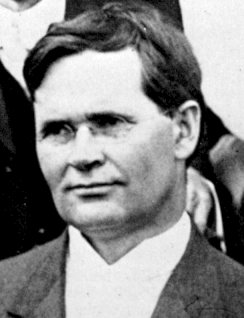
JOHN WASHINGTON GILMORE (1872-1942), for whom the old and the new Gilmore halls were named, was the first president of the College of Hawaii, predecessor of the University of Hawai'i. Born in White County, Arkansas, Gilmore was the son of a farmer. He graduated with bachelor's and master's degrees from Cornell University. He helped in 1898 to establish the first agricultural school in China. Gilmore taught at the Honolulu Normal School in 1900 and in 1901-1902 helped to establish the school system in the Philippines. He returned to the US to teach at Cornell and Pennsylvania before he was recruited for the Hawai'i college presidency.
Gilmore was authorized to recruit his own faculty. The college was ridiculed during its first year of existence because the thirteen faculty members outnumbered students, three to one. Gilmore chose professors who shared his beliefs that land-grant institutions should serve the public and should democratize higher education.

University photo
Gilmore led the college during its fledgling years when the difficulties were many. Financial conditions of the college were dismal and many in the community doubted the worth of the new institution. Gilmore resigned in 1913. Thereafter he was a professor at the University of California and later at the University of Chili. In scientific circles he is recognized for his efforts to synthesize rubber.
____________
Day, A. Grove. History Makers of Hawaii.(Mutual, 1984)
Kittelson, David. The History of the College of Hawaii. M.A. thesis, University of Hawaii, 1966.